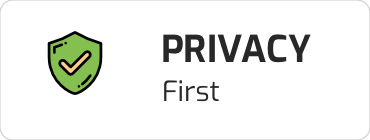I know that FACEIO is getting very popular now. I'd like to discuss further any specific aspect of FACEIO's technology or security practices. Considering the security measures implemented by FACEIO, such as deepfake detection and unique PIN enforcement, how does it compare in terms of overall security and user convenience to traditional password-based systems and emerging technologies like Passkeys?
What Security Mechanisms Does FACEIO Already Implements?
Asked
Modified
Viewed
2508 times





Hi Michael,
Applications security isn’t a feature or a benefit – it is a bare necessity. Please take a look at the FACEIO Security Center for additional information about the set of security mechanisms implemented by FACEIO including but not limited to: Face Anti Spoofing & Deep Fake Prevention, Minors Access Restriction, Strong PIN Code Enforcements, and so on...
Now, the long answer:
It's important to have open discussions about the security and privacy implications of any authentication technology. I'd like to address some of the points you've raised:
In conclusion, while FACEIO, like any authentication system, has areas that could be improved, it incorporates several robust security measures. It's also important to remember that no single authentication method is universally superior; the choice often depends on the specific requirements and context of the application.